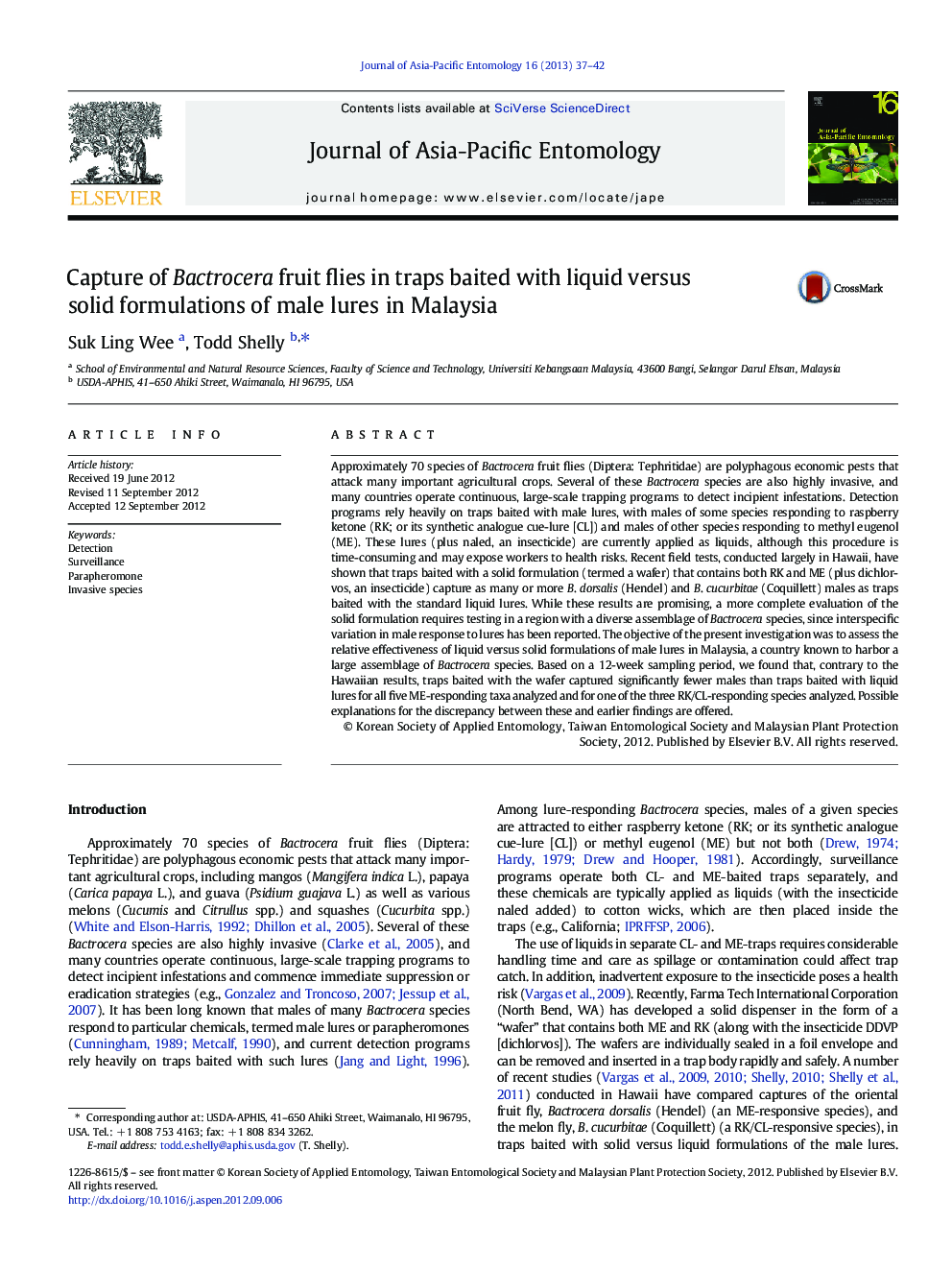| Article ID | Journal | Published Year | Pages | File Type |
|---|---|---|---|---|
| 4524760 | Journal of Asia-Pacific Entomology | 2013 | 6 Pages |
Approximately 70 species of Bactrocera fruit flies (Diptera: Tephritidae) are polyphagous economic pests that attack many important agricultural crops. Several of these Bactrocera species are also highly invasive, and many countries operate continuous, large-scale trapping programs to detect incipient infestations. Detection programs rely heavily on traps baited with male lures, with males of some species responding to raspberry ketone (RK; or its synthetic analogue cue-lure [CL]) and males of other species responding to methyl eugenol (ME). These lures (plus naled, an insecticide) are currently applied as liquids, although this procedure is time-consuming and may expose workers to health risks. Recent field tests, conducted largely in Hawaii, have shown that traps baited with a solid formulation (termed a wafer) that contains both RK and ME (plus dichlorvos, an insecticide) capture as many or more B. dorsalis (Hendel) and B. cucurbitae (Coquillett) males as traps baited with the standard liquid lures. While these results are promising, a more complete evaluation of the solid formulation requires testing in a region with a diverse assemblage of Bactrocera species, since interspecific variation in male response to lures has been reported. The objective of the present investigation was to assess the relative effectiveness of liquid versus solid formulations of male lures in Malaysia, a country known to harbor a large assemblage of Bactrocera species. Based on a 12-week sampling period, we found that, contrary to the Hawaiian results, traps baited with the wafer captured significantly fewer males than traps baited with liquid lures for all five ME-responding taxa analyzed and for one of the three RK/CL-responding species analyzed. Possible explanations for the discrepancy between these and earlier findings are offered.
Graphical abstractFigure optionsDownload full-size imageDownload as PowerPoint slideHighlights► We compare the efficacy of liquid versus solid male lures. ► This type of work is new to Malaysia and its Bactrocera fauna. ► The data will assist in the development of efficient detection systems.
